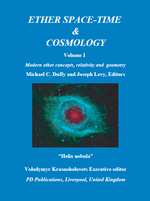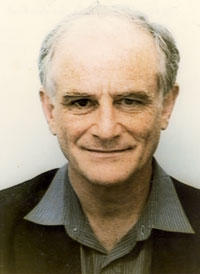Ether Space-Time and Cosmology, Vol. 1: Modern Ether Concepts, Relativity and Geometry
KeyWords: aether
Discussion
Your membership status does not allow you to participate in discussion or see all comments.
|
The one-way speed of light is simply not constant with respect to the observer, February 19, 2010
1 decade 4 years ago
[2010-03-14 01:39:54]
|





A key concept to emerge from this work is the observation, and there is quite a bit of experimental evidence to support it, that the speed of light is anisotropic; that is, the one-way speed of light is not constant with respect to the observer due to the motion of measuring devices through the cosmic substratum. Current measures are systematically found to be 'c', but they concern the two-way (round-trip) measurement of the speed of light. The use of standard synchronization procedures is shown to generate a synchronism discrepancy effect.
It is a bit of a challenge to write a concise review for a work such as this. Unlike a textbook, collections cover a broad range of topics written by several different authors with several different writing styles. To be certain, this is not a recreational book for the uninitiated. It is a highly technical treatment of the subject matter intended for the erudite (and open-minded) reader with a serious interest in this topic. Readers seeking more information are urged to consult the table of contents for each Volume at, say, Apeiron book store, to get an overall idea of the variety of topics covered. Some of the subject matter is purely historical in nature, some of it analyzes experimental data, and some of it is strictly theoretical. All in all, it is a very interesting collection of papers, the likes of which has not been seen since the collected works on relativity edited by Turner & Hazelett in 1979. No one with a serious interest in this subject should be without a copy in his or her library